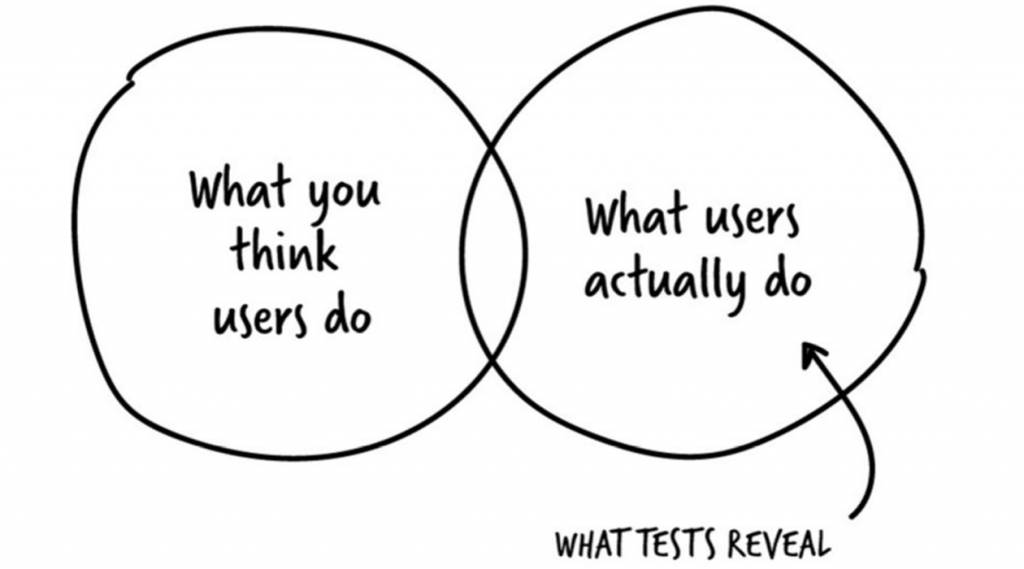UX – User Testing, do you need it for your project?
There are different types or ways or user testing so let’s explain what it is.
It’s the best and most optimised way of understanding how real people will likely interact with your website, product or application. This set group of people are asked to complete a certain amount of tasks that directly relate to interacting with – your product, website or application. That’s a long-phrase so let’s call it – your “design“! The kinds of problems more of those people encounter whilst completing those tasks, will give you a good indication of what needs to be improved or changed for the benefit of your design.
A quick word of warning: If a designer is working on a sizable project and tells you that this is a process their designs do not need to go through any form for testing or validation and you believe them, then dear reader you have been hoodwinked.
Desi Reuben-Sealey – UX Talk
Focus Groups
In this setting, you are able to interact with and watch a group of people use your design. You can listen to them discuss your design in-depth as well as get a sneak peek into how they think and process what they see and hear. It’s a good method to use if you want to generate potential new ideas. This is a qualitative method of testing.
Beta Testing
This is where you can release the design to a group of people who are happy to trial it. Call them your “fans”. These are people who support your movement, your designs and so on. Everyone is a winner in this situation because you can use this as a way to market your design and get constructive feedback to help improve it – add those final tweaks that take can transform your design from good to potentially great. This also is a quantitive method of testing.
Card Sorting
This is a great way to see how your users understand the information architecture of your design. For the best results, you probably want to test around 20 or so from my own experience (Jakob Nielsen recommends around 15 – budget dependant). However, I’ve worked on midsize to large projects so that’s about the right number. The best way of presenting the information is always as a “blank canvas” for “them” to manipulate as they see fit, not for you to present how you see it structured. Doing that would potentially skew your own results. With this type of quantitive study, like the other above (even though I haven’t mentioned any) there are a few weaknesses as Mr Nielsen attests to, but if done the right way can produce very good results.
A/B Testing
Here you have the opportunity to study the behaviour of your users. How they act in different scenarios. Adding multiple cameras if possible and other types of recording techniques such as heat mapping (how users navigate around) and eye-tracking (what users look at) can really enhance your results.
Include User Testing in your project

This should be defaulted to “yes” in all design projects. It’s not a question in my opinion, the gains are huge if done properly and you allow the users and not your preference to influence your design. Take these select statistics as an example as to why it is necessary:
- Bank of America had a 45% ROI increase because of including UX in their onboarding process
- 68% of users give up in online processes because they believe that you do not care about them
- 89% of users purchased from a competitor because of a poor customer experience
Conclusion
Whilst testing has tonnes of value, you don’t want to endlessly keep testing. “When do I start testing in my project then I hear you say?” As early as possible. Work it into your project plan from the beginning so it’s planned for. Once you have enough of your design worth testing on, then get the process started. This way you have the opportunity to change anything that needs to be changed at a much lower cost to yourself. You will also do one very important thing: ensure all user requirements have been met.
The real test as always is getting the design out into market. So be prepared to iterate. The best products out there are the ones that evolve to the needs of their users.
Think of it this way, if you realise your loaf of bread needs more salt at the mixing stage you can simply add it. You haven’t really lost much time or investment at this point. However, if you’ve baked your loaf, sliced and served it up and THEN you realise it needs more salt, you’ll likely need to start again if you want the design to be the success you originally planned it to be, therefore multiplying time, resources, costs and then some.
Understand that when you don’t include the User Experience process of User Testing in your design project, you are literally throwing potentially masses of ROI out of the window.
With that said, what has been your experience when including User Experience processes in your project?
Statistical source: https://www.usertesting.com/blog/2015/08/04/ux-investment-infographic/



UX - 4 Tough Challenges in User Experience you can overcome
[…] and get to know your UX processes thoroughly, this enables you to set the correct […]